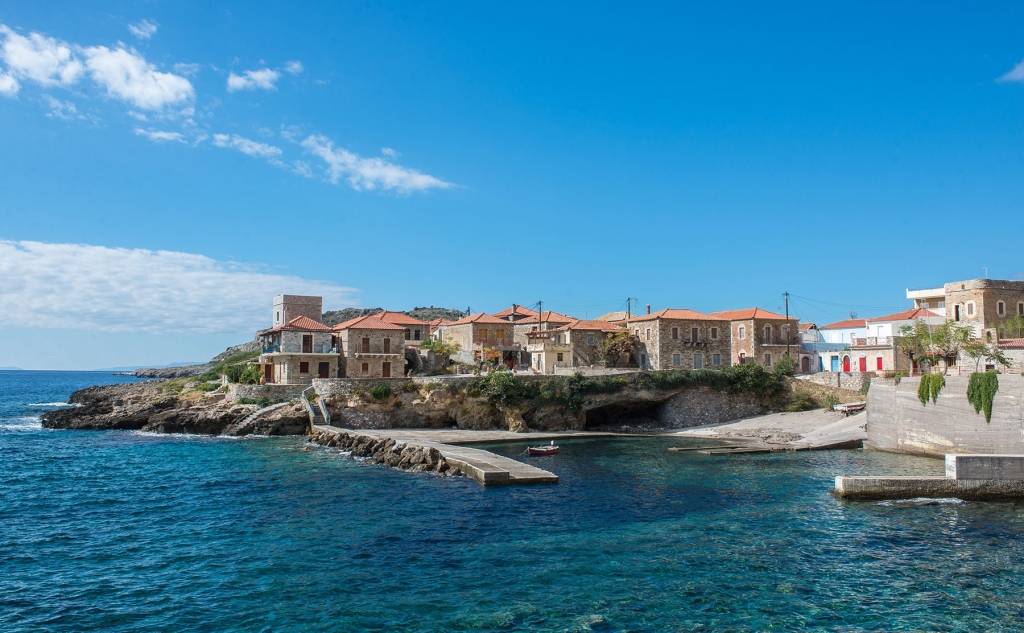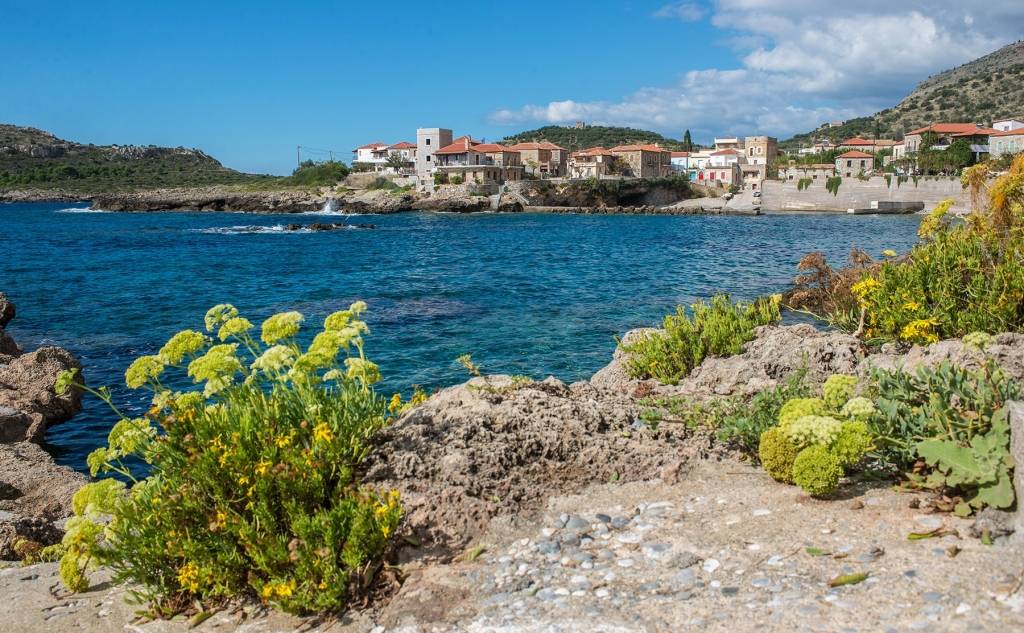






The coastal village of Trachila is built on the small cove of the same name. It is 55 kilometres from Kalamata, 17 from Kardamyli and 11 from Stoupa. It has about 90 permanent residents. The ancient name of Trachila is due to the architecture of the land since the entire village is built on top of caves. It was first mentioned at the beginning of the 18th century in a document related to the Mani people who had embarked to go to Corsica.
On June 21st, 1826, Trachila was bombarded by the Turkish-Egyptian fleet as part of Ibrahim Pasha's campaign against Mani. In the following years, it experienced growth as it was a transit trade centre with the neighbouring villages and a maritime transport junction.
Near the village is the Katafygi cave (also known as Triorofo of Trachila), with magnificent decorations and massive columns made of stalagmite material. It also has an essential speleological fauna and traces of earlier habitation, as in previous centuries, it functioned as a refuge in times of raids.
Along the coastal road that connects Trachila with the small, picturesque port and the beach of Agios Dimitrios, there are lovely virgin beaches with crystal clear waters - ideal for moments of relaxation. At this point, we should mention that Trachila is famous for its coarse sea salt, which is collected from the rocks next to the sea in a traditional way.
Today Trachila is one of the most picturesque villages of Western Mani, with its characteristic stone houses. There, visitors will encounter remarkable examples of the famous architecture of the 19th century, such as the building of the old Primary School and the K. Meleas’ historically preserved building. Finally, poet Giorgos Daniil (Georgios Georgakarakos, 1938-1991) was born in the village.